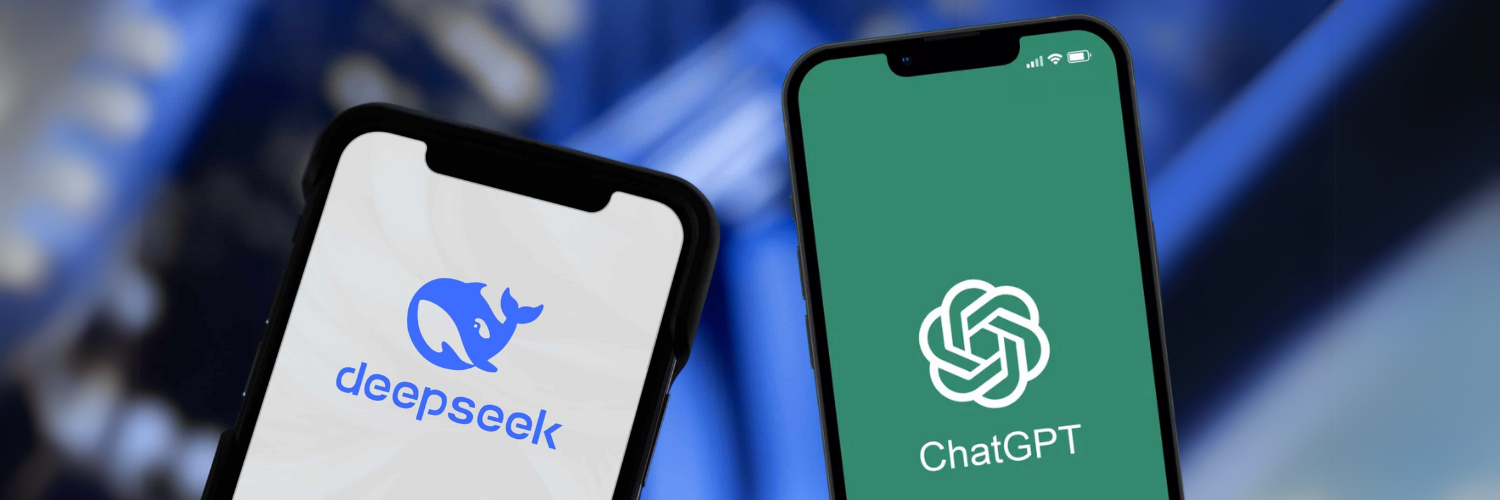Deepseek vs ChatGPT - A New Player in the AI Landscape
Deepseek has sent a shockwave through the AI industry, delivering performance that rivals ChatGPT while operating on a fraction of the budget. But what does this mean for AI users, businesses, and the future of the technology? If you’re wondering why this matters and how it affects you, let’s break it down.
What is Deepseek?
Deepseek is a new AI chatbot developed by a Chinese AI start-up of the same name. Designed to compete with leading AI chatbots—most notably ChatGPT by OpenAI—Deepseek has demonstrated impressive capabilities in generating text, answering questions, and assisting with various tasks. Unlike its high-profile competitors, Deepseek focuses on efficiency and cost-effectiveness, aiming to deliver powerful AI capabilities without the massive investment typically required to develop state-of-the-art models.
What Makes Deepseek Different from ChatGPT?
While both Deepseek and ChatGPT function as AI chatbots designed to process and generate human-like text, they differ in key areas:
Origin & Cost
ChatGPT is developed by OpenAI, a U.S.-based AI research company known for pioneering large-scale language models. OpenAI has been at the forefront of AI advancements, consistently refining and expanding its models. With this leadership comes a cost—both in terms of development and for users seeking premium access. OpenAI has estimated that developing and training ChatGPT-o1 cost around $100 million, leading to the commercialization of its premium features.
Deepseek, in contrast, originates from China and prioritizes efficiency and affordability. Despite having fewer resources than OpenAI, Deepseek has managed to develop a model that closely competes with ChatGPT in performance—at a fraction of the cost. Reports suggest that Deepseek was created with a budget of just $6 million, making it a potentially disruptive force in the AI landscape. Deepseek is free to use, and if it remains this way it could present a significant alternative to ChatGPT in terms of cost and flexibility for commercial and academic use.
Model
ChatGPT is widely accessible through OpenAI’s platform. API also allows businesses and developers to integrate ChatGPT into their own applications. However, ChatGPT is not open-source, meaning developers and researchers have limited visibility into its inner workings and must rely on OpenAI’s pricing and access policies.
Deepseek, in contrast, has embraced an open-source approach. This means developers and businesses can access, modify, and deploy the model as needed, making it a more flexible and transparent alternative. Open-source AI models can drive innovation by allowing the community to contribute improvements and address biases collaboratively. However, with open-source models, there is always potential for misuse, which can be a concern for cybercrime, as open-source platforms can be used to create phishing emails or abusive images.
Information Bias
Bias in AI models remains a significant concern, as these systems learn from large datasets that may contain inherent biases. OpenAI has taken steps to reduce bias in ChatGPT, including reinforcement learning with human feedback (RLHF). However, no model is entirely free from bias.
DeepSeek’s approach to bias mitigation is still being examined. If it can provide an alternative or improved method of handling biased outputs while maintaining accuracy, it could become a strong competitor in the AI space. However, given that DeepSeek was developed by a Chinese start-up, it has demonstrated a tendency to avoid politically sensitive or taboo topics. This reflects broader concerns about government influence on Chinese technology, which has historically limited its ability to compete freely with U.S. counterparts.
In a test involving 12 notable historical incidents, DeepSeek refused to answer or presented responses favoring the Chinese perspective 88% of the time—effectively avoiding 9 out of 10 sensitive topics. The example below highlights how its responses differ from other AI models, underscoring the importance of considering the origins of an AI system and applying critical thinking when evaluating its answers.
See below how the answer differed when the same question was asked to both Deepseek and ChatGPT:
“Explain the key controversies around Tiananmen Square, specifically focusing on China’s actions.”
Deepseek:
ChatGPT:
Final Thoughts
The rise of Deepseek highlights an exciting evolution in AI development, showing that high-quality models can be built without massive budgets, and independent of the US. As competition increases, users and businesses will have more choices, leading to potentially more affordable and diverse AI solutions. While staying informed about new advancements is crucial, it’s equally important to approach AI tools with caution—especially when handling sensitive data or interpreting responses that may carry biases across different platforms.
Try for yourself here!
ChatGPT - ChatGPT
Deepseek - DeepSeek
 The peoples choice award voting is now open.
The peoples choice award voting is now open.